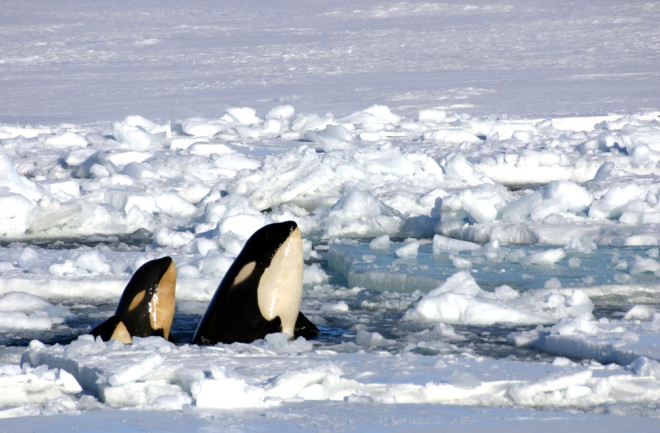For a brief moment in February, the world collectively held its breath upon discovering the plight of an orca pod trapped in sea ice. The frantic scene unfolded near the town of Rausu, off the coast of Hokkaido, Japan’s northernmost prefecture.
According to Japanese media organization NHK, a local fisherman first contacted the town’s Coast Guard station on the morning of Feb. 6, 2024 to report an orca stuck between sheets of ice. Footage from later that afternoon revealed more orcas — about a dozen — trapped in the ice.
It seemed that nothing could be done to save them, as it was impossible to send any help through the ice-laden water without the risk of further restricting the orcas. The only hope was to wait for the ice to break up.
Anyone who has seen footage knows just how heart-wrenching the situation was. The orcas, huddled together with their distinct black-and-white heads peeking out of the frigid sea, look defeated as they bobbed up and down in the water. But how did they get themselves in this mess in the first place?
How Do Orcas Get Stuck In Ice?
This isn’t the first time orcas and other marine species have struggled due to drift ice. There have been numerous instances of ice entrapment, from the Canadian Arctic to the Sea of Okhotsk, north of Hokkaido.
Orcas — living in oceans all around the world — seem to prefer colder water, but they tend to avoid areas with significant amounts of ice. However, sea ice is on a constant decline in the Arctic due to rising global temperatures. Some groups of orcas have been lingering in waters farther north for longer periods of time, potentially seeking prey.
Read More: Orcas May Devour Marine Mammals, But They Typically Avoid Harming Humans
By moving north, the orcas may be unfamiliar with certain Arctic environments, leaving them vulnerable to ice entrapment. Instances of entrapment often result in death, especially when mobile drift ice is involved.
What's Drift Ice?
Drift ice is not attached to any other object, so it freely moves on ocean surfaces, pushed by wind or sea currents. The drift ice near Hokkaido might have been carried there by the Sakhalin Current.
In mid-January and early February, this ice (called “ryuhyo” in Japanese) usually moves to the northern coast of Hokkaido. The southernmost point where drift ice can be seen in the Northern Hemisphere is at Shiretoko Peninsula, a portion of Hokkaido that protrudes into the Sea of Okhotsk.
The arrival of the ice is welcomed by townspeople, who celebrate the occasion with the Abashiri Okhotsk Drift Ice Festival. Despite being the center of local interest, this drift ice now has a history of imprisoning orcas. Previously, in 2005, a group of orcas got trapped in ice near Rausu, and unfortunately, most of them died.
As for the trapped orcas near Rausu, it is likely that they came up for a breath in a small gap in the dense field of drift ice. Unlike the automatic breathing of humans, orcas must actively choose when to breathe. As a result, they cannot go into a deep, unconscious sleep, and instead must shut down half of their brain in a process called unihemispheric slow-wave sleep. This allows them to rest while still being able to rise to the surface when they need to breathe. Orcas can hold their breath up to 15 minutes underwater, but usually surface every 3 to 5 minutes when doing deeper dives.
Read More: Orcas Have Social Trends Like Us, And This One Could Get Dangerous For Boats
Did the Orcas Ever Escape?
Promising news followed the morning after the icy fiasco; the orcas could no longer be seen, and officials claimed that they were eventually able to escape as gaps between the ice widened. Viewers who had followed the viral moment breathed a sigh of relief, and although these orcas were lucky, ice entrapment remains a hazard for the species.
Orcas and other cetaceans, like narwhals and beluga whales, will continue to face the risk of ice entrapment in Arctic environments, even if it is not common. Animal lovers can relax for now, but similar viral incidents may very well pop up in the future.

